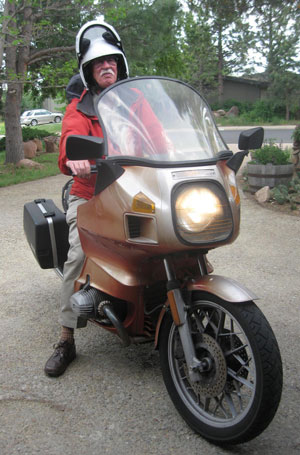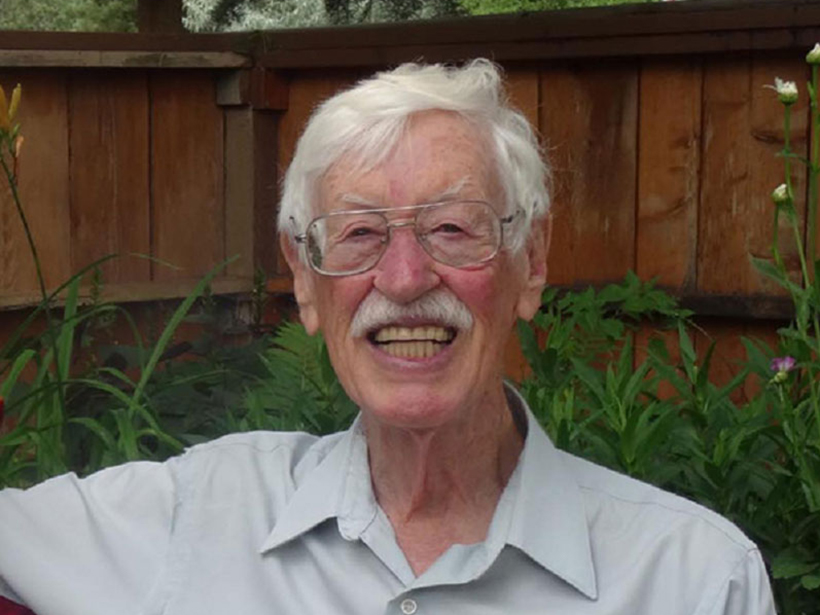Dave Evans was one of the pioneers of rocket measurements over the aurora. He is perhaps best known for his incisive research on plasma electron acceleration that produces vivid auroral displays. On 14 October 2016, he passed away peacefully at his home in Boulder, Colo., at age 80.
Dave was originally from Milwaukee, Wis., where he was born on 17 June 1936. He received a bachelor’s degree in physics from the University of Michigan. His long and productive research career began with graduate research work at the Space Sciences Laboratory of the University of California, Berkeley; he then progressed to NASA’s Goddard Space Flight Center (GSFC) in Maryland.
Dave moved to Boulder, Colo., in 1970, where he was a research scientist with the National Oceanic and Atmospheric Administration’s (NOAA) Space Environment Center (later renamed the Space Weather Prediction Center) until he retired in 2003. Before he retired, Dave did two tours of duty at NASA Headquarters in Washington, D. C., returning each time to Boulder.
During the 1960s, Dave worked with the Bendix Corporation to improve their “channeltron” electron multipliers by curving the channels to reduce ion feedback, which improved their gain and sensitivity dramatically. He used that technical knowledge and experience at GSFC to develop an “open windowed electron multiplier” to measure auroral particles.
Examining the Aurora
This innovation also led to improvements in imaging detectors based on microchannel plates. To this day, nearly all space plasma observations are based on these devices. Sounding rockets launched from Canada carried instruments incorporating these imaging detectors. Dave used data from these instruments to perform some of the earliest measurements of the low-energy electron precipitation into the atmosphere that produces the aurora borealis and australis.
Evans proved for the first time that electric fields aligned parallel to magnetic field lines were responsible for energizing the electrons that form Earth’s magnificent aurora.
His work with the rocket data in the mid-1970s led to his most famous paper, in which he convincingly answered one of the most actively debated questions of that period. He proved for the first time that electric fields aligned parallel to magnetic field lines were responsible for energizing the electrons that form Earth’s magnificent aurora. He did this by showing that auroral backscatter and secondary electrons from the atmosphere are trapped and that the observed characteristics of auroral electrons inevitably result. Satellite observations confirmed his prediction that such electrons flow to high altitudes in the absence of discrete aurora.
Dave’s interests, and his views on auroras and the requisite electron acceleration, were perhaps best captured in a quote often attributed to him: “Waterfalls are turbulent. But turbulence doesn’t make the water fall.” He also disparaged Faraday’s concept of magnetic field lines of force, believing these field lines to be a conceptual crutch that obscured a clear understanding of the electric fields produced by moving charged particles (electrical currents). He was critical of the idea that magnetic field lines act like rubber bands that can “reconnect.” There is no doubt that his opinions on magnetic fields were controversial; he was not afraid to challenge the conventional wisdom. In doing so, he set an example for all of us scientists.
Many of us also know him for his statistical maps of auroral energy influx and characteristic energy. These maps became an operational product at NOAA, and scientists continue to use them today. His auroral maps are used in physics-based models of the upper atmosphere and in assimilative models of auroral electrodynamics.
From 1989 to 1991, during his first stint at the Space Physics Division at NASA in Washington, D. C., he reorganized the peer review process for research proposals and coordinated many of the reviews over the following years. His mantra was, What’s the science question you want to address? Why is it important? And how are you going to answer the question? The basis of his review process is still being used at NASA today.
A Passion for Science
Dave was a penetrating and insightful thinker on many subjects and issues, some political in nature. When one of us first met him, his office featured a “Nixon countdown calendar” that marked the days until the end of Nixon’s term in office. During his tours at NASA Headquarters, his interests in space policy were ignited. He was an avid reader of policy-related works, notably The Heavens and the Earth: A Political History of the Space Age by Walter A. McDougall.
Many of us also know that Dave had a wry sense of humor: Upon receiving a book that had been on loan from his personal library for more than 20 years, he asked, “What happened to the $100 bill I was using for a bookmark?” One had to have a quick retort to match his quick wit.

Dave was passionate about science and very generous with his knowledge, wisdom, and guidance of early-career scientists. He never hesitated to share what he knew, which meant that many young scientists could build upon his accomplishments. Dave was a truly unselfish leader and motivator, and he loved to chat about physics, particularly over a beer! His scientific integrity and passion for physics have been an inspiration to the life and career of many scientists.
Dave was a family man and is survived by Susan, his wife of 57 years; 8 children; 15 grandchildren; and 5 great-grandchildren. Dave loved the Green Bay Packers, Judy Collins songs, and reading. He enjoyed constructing intricate models of World War II airplanes, and he loved riding his motorcycle along back mountain roads and Sunday drives with his family. He was especially fond of XXX IPA beer and sudoku at Southern Sun Pub & Brewery in Boulder’s Table Mesa neighborhood, where the employees knew him affectionately as Doctor X.
Dave was a talented, unselfish, and courageous man who will be sorely missed by colleagues, family, and friends, both local and worldwide.
—Thomas E. Moore, Heliophysics Science Division, NASA Goddard Space Flight Center, Greenbelt, Md.; and Tim Fuller-Rowell (email: [email protected]), Cooperative Institute for Research in Environmental Sciences, University of Colorado Boulder; and Space Weather Prediction Center, National Oceanic and Atmospheric Administration, Boulder, Colo.
Citation:
Moore, T. E.,Fuller-Rowell, T. (2017), David S. Evans (1936–2016), Eos, 98, https://doi.org/10.1029/2017EO073779. Published on 25 May 2017.
Text © 2017. The authors. CC BY-NC-ND 3.0
Except where otherwise noted, images are subject to copyright. Any reuse without express permission from the copyright owner is prohibited.

